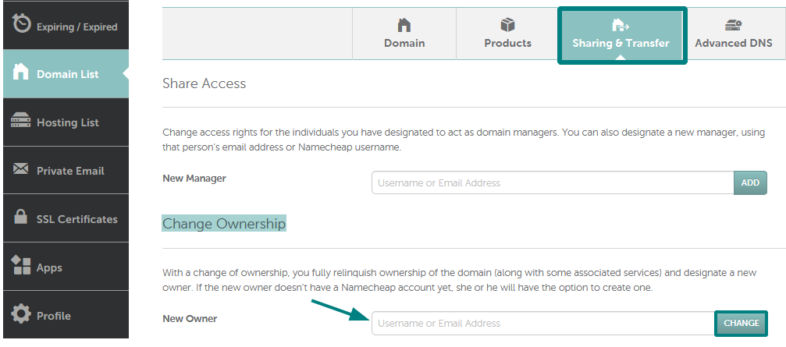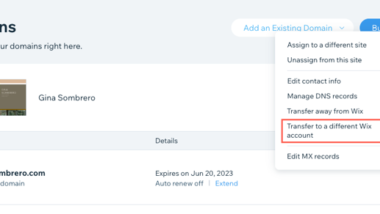If you’re looking to transfer a domain name to someone else, Timely Domains has got you covered. As a leading domain investment company, we specialize in acquiring, selling, and managing premium domain names. Our team of seasoned experts meticulously curates a diverse portfolio of sought-after domain names, including brandable, exact match, and expired domains. With our transparent pricing, personalized support, and secure transactions, Timely Domains is the trusted partner you need to transfer your domain name smoothly and hassle-free. Whether you’re a business owner, an entrepreneur, or an individual looking to invest in premium domains, we are here to help you achieve your online objectives effectively.

Understanding Domain Transfers
What is a domain transfer?
A domain transfer refers to the process of moving a domain name from one registrar to another or transferring ownership of a domain from one entity to another. This allows the new owner to gain control over the domain and manage its registration, renewal, and other settings.
Why transfer a domain name?
There are several reasons why you might consider transferring a domain name:
-
Change of ownership: If you are selling or buying a domain, transferring ownership is necessary to ensure that the new owner can manage the domain effectively.
-
Better domain management: Some registrars offer more advanced features, better customer support, or lower pricing. Transferring your domain to a different registrar can help you take advantage of these benefits.
-
Consolidation of domains: If you have multiple domains registered with different registrars, transferring them to a single registrar can simplify management and renewal processes.
-
Improved performance: In some cases, transferring a domain to a different registrar can result in better website performance, faster DNS resolution, or enhanced security features.
Important considerations before transferring a domain
Before initiating a domain transfer, there are a few essential considerations to keep in mind:
-
Domain eligibility: Not all domains are eligible for transfer. Some domains may have certain restrictions or limitations imposed by the registry, such as country-specific domains or recently registered domains.
-
Time and cost: Domain transfers usually involve a certain amount of time and cost. It’s important to be aware of any potential delays and fees associated with the transfer process.
-
Expiration date: Make sure your domain is not close to expiring before initiating a transfer. Transfers may take several days to complete, and an expired domain may cause complications during the transfer process.
-
Locked domains: Some registrars automatically lock domains to prevent unauthorized transfers. Before initiating a transfer, you need to unlock your domain to ensure a smooth transfer process.
-
Privacy protection: If you have privacy protection enabled for your domain, you will need to disable it before initiating a transfer. Privacy protection can restrict the transfer process by masking your contact information.
By considering these factors beforehand, you can ensure a seamless and successful domain transfer process.
Preparing for the Domain Transfer
Before initiating the domain transfer, it’s important to complete a series of steps to ensure a smooth transition. Here’s a comprehensive list of tasks to prepare for the transfer:
1. Verify ownership and contact information
Ensure that you are the registered owner of the domain and that your contact information is up to date. This will prevent any complications during the domain transfer process and ensure that you receive important notifications and confirmations.
2. Check domain eligibility for transfer
Confirm that your domain is eligible for transfer by checking with your current registrar and reviewing any restrictions or requirements set by the registry. Some domain extensions may have specific rules for transfers, so it’s essential to be aware of these beforehand.
3. Unlock the domain
If your domain is locked, you will need to unlock it before initiating the transfer. This can usually be done through your current registrar’s account management panel. Unlocking the domain allows the transfer process to proceed smoothly.
4. Disable privacy protection
If you have privacy protection enabled for your domain, you must disable it before starting the transfer. Privacy protection hides your contact information from public WHOIS databases, but it can also interfere with the transfer process. Disable privacy protection to ensure that the new owner’s contact information is accurately reflected in the domain records.
5. Obtain the domain’s authorization code
The authorization code, also known as the EPP code or transfer code, is a unique code that verifies your ownership and authorizes the transfer of the domain. Retrieve the authorization code from your current registrar, as you will need to provide it during the transfer process. Keep this code secure, as it serves as a security measure to prevent unauthorized transfers.
By completing these preparation steps, you will ensure that the domain transfer process can proceed smoothly and without any unnecessary delays or complications.

Initiating the Domain Transfer
Once you have prepared for the domain transfer, it’s time to initiate the process. Follow these steps to get started:
1. Choose or confirm the new domain owner
If you are transferring the domain to another person or entity, make sure to obtain the necessary information from the new owner. This may include their contact details, such as name, email address, and phone number. Ensure that the new owner has an account with the new registrar where they can receive domain transfer notifications and manage the domain.
2. Transfer request initiation
Contact the new registrar and initiate the transfer request. This can usually be done through their website or customer support. Provide the necessary information, such as the domain name and authorization code, to initiate the transfer process. The new registrar will guide you through the necessary steps and provide instructions for completing the transfer.
3. Provide the authorization code
During the transfer request, you will be prompted to enter the domain’s authorization code. This code serves as proof of ownership and ensures that only the rightful owner can authorize the transfer. Enter the code accurately to verify your ownership and proceed with the transfer.
4. Confirm transfer request with both parties
Both the current owner and the new owner will need to confirm the transfer request. This step is crucial to prevent unauthorized transfers and ensure that all parties are aware of and consent to the domain’s transfer. Check your email for confirmation requests from both the current and new registrars and follow the provided instructions to confirm the transfer.
5. Pay any applicable transfer fees
Depending on the registrars involved and the domain extension, there may be transfer fees associated with the domain transfer. Review the fee structure provided by the new registrar and make any necessary payments to proceed with the transfer. Keep in mind that fees can vary, so it’s important to review them carefully before initiating the transfer.
By following these steps, you can initiate the domain transfer process and set the stage for a successful transfer to the new registrar or owner.
…





